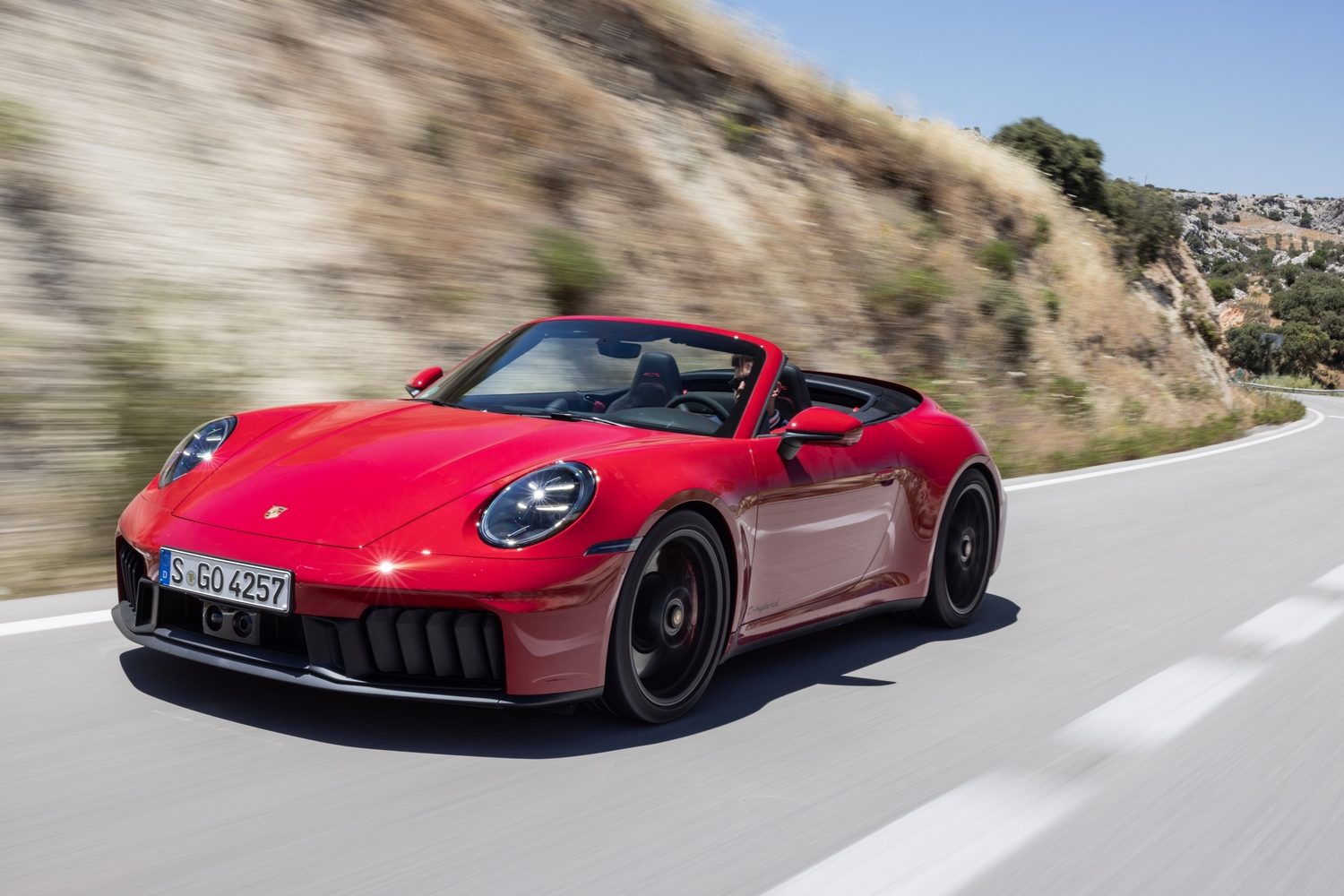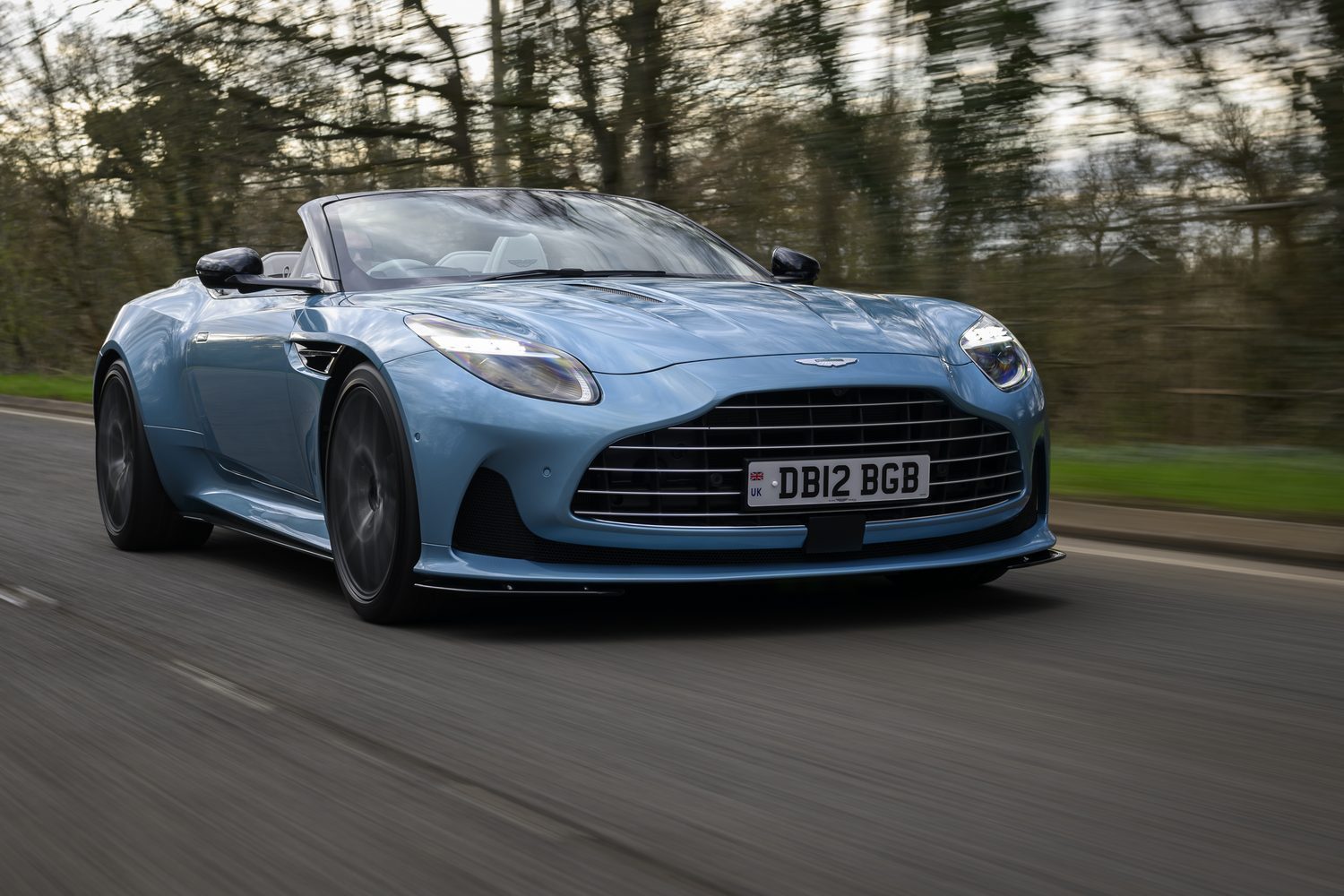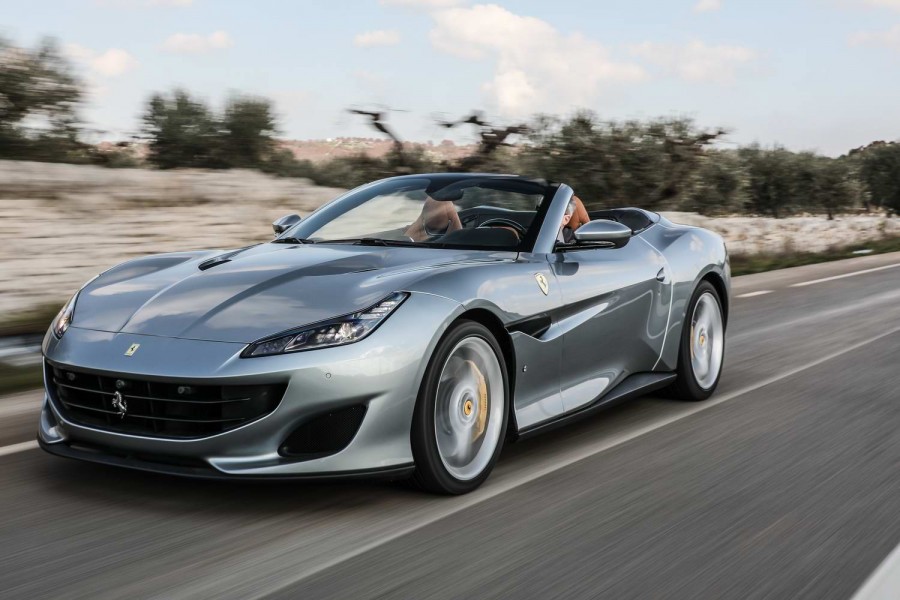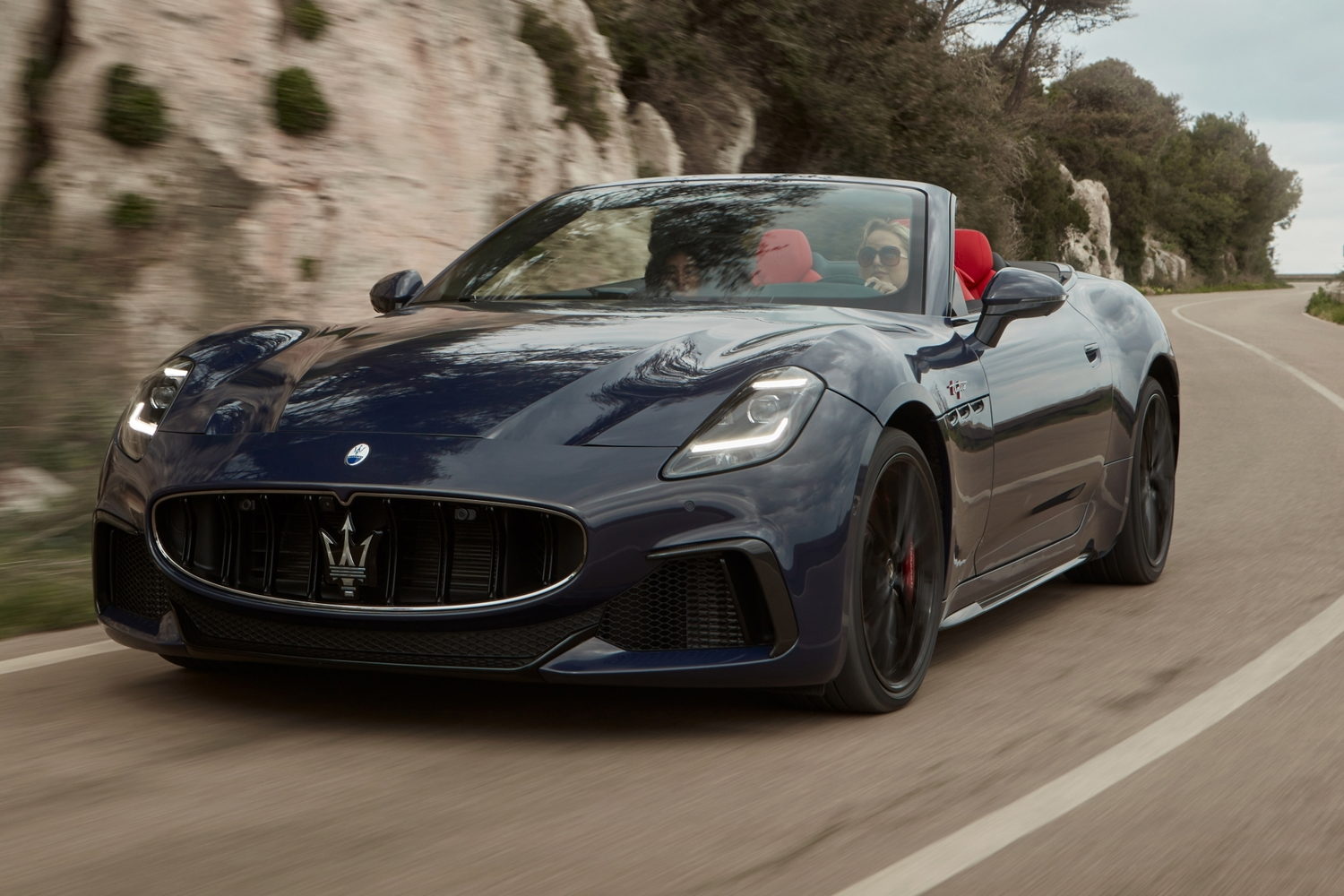Now the fuss surrounding the 911 GTS’s switch to hybrid power has died down a bit (and the hybrid system has proved itself to be pretty sensational), we’ve been able to enjoy the sheer brilliance of the latest-generation 992.2 GTS models, including the softer, everyday driver that is the Carrera 4 GTS Targa and the purist’s sporty rear-wheel-drive Carrera GTS Coupe. Now it’s the turn of the third body shape in the GTS range - the Cabriolet - and while our experience of the new 911 range suggests we should be expecting good things, that only adds to the pressure on this car.
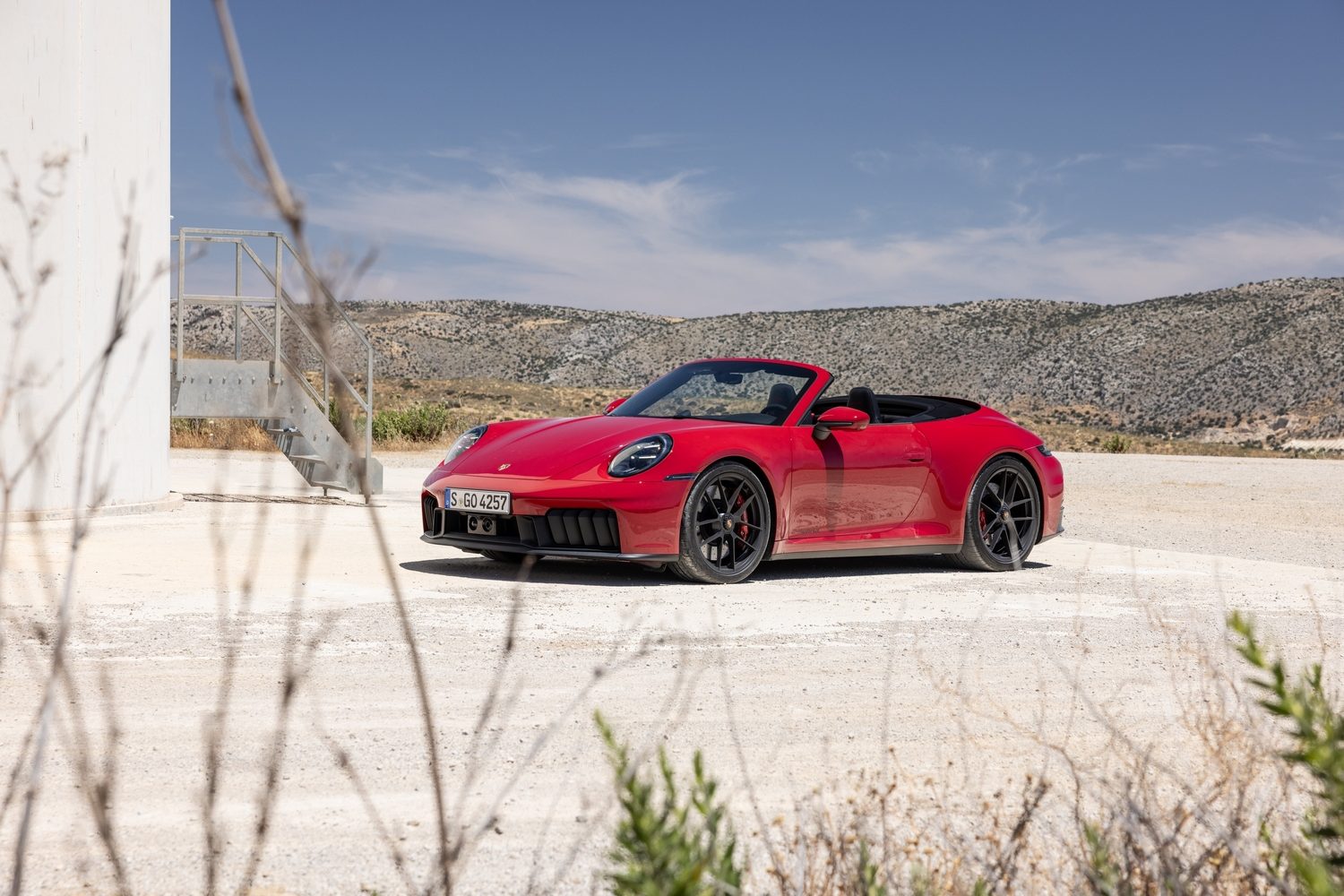
Our first drive of this variant was in the depths of a northern European winter, with snow lying in the fields and steam pouring from the sports exhausts (not quite the same as the scenes depicted in our images...). But with an all-wheel-drive system under the bodywork, will the 911 Carrera 4 GTS Cabriolet prove an all-season success, or will it fall short of the standards set by its stablemates?
How does the Porsche 991 Carrera 4 GTS Cabriolet look?
As with the GTS Coupe, Porsche has taken a fairly standard 911 Cabriolet and simply given it the GTS treatment, which is a bit of a mixed blessing. The 911 Cabriolet isn’t necessarily the prettiest 911 body shape, thanks to the folded roof being stacked on top of the engine, leaving it with that kind of hunchback design. It isn’t hideous, but we can understand why those wanting an open-top 911 might prefer the somewhat sexier-looking Targa.
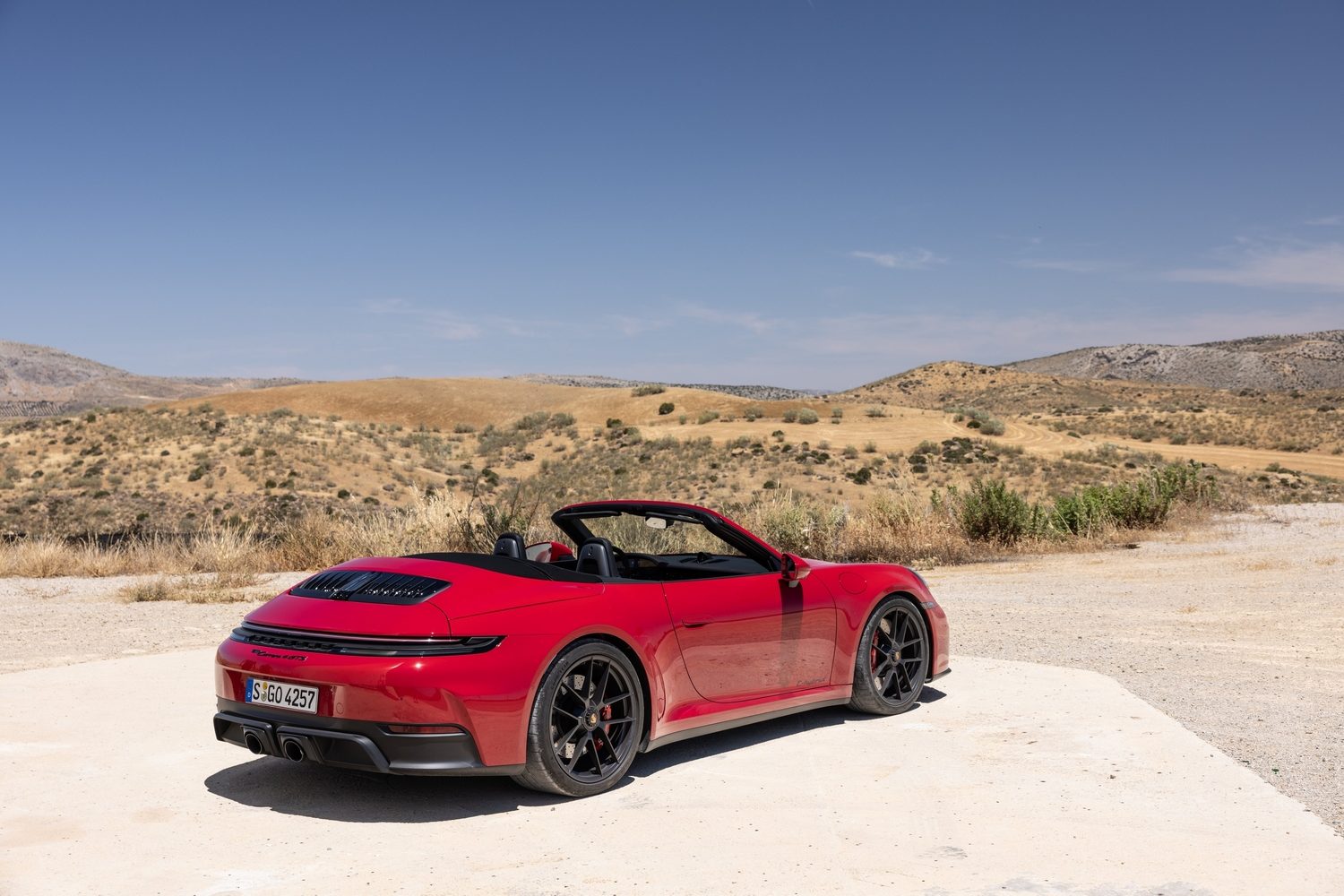
Whether you choose a Targa or a Cabriolet, though, the 911 GTS has the same visual upgrades, with more distinctive bumpers and dark alloy wheels fitted as standard. The bumpers won’t be to everyone’s taste - the gills that open and close depending on the car’s cooling needs look a bit awkward - but it’s undoubtedly distinctive. And unlike the Targa 4 GTS, the Carrera 4 GTS Cabriolet gets the same sports suspension as the Coupe, allowing it to sit 10mm lower than a standard Carrera Cabriolet. Combine that with the red brake callipers and the black exterior garnish, and the GTS Cabriolet looks purposeful enough, if not exactly drop-dead gorgeous.
How fast is the Porsche 911 Carrera 4 GTS Cabriolet?
Just like the Carrera 4 GTS Coupe we drove last year, the GTS Cabriolet gets the T-Hybrid performance powertrain that’s new to the 911 range. While some feared it might neuter the definitive sports car somewhat, it has now been proven to do nothing of the sort, instead offering more power, more performance and more responsiveness.
Admittedly, it’s heavy. The Carrera 4 GTS Cabriolet weighs in at more than 1.7 tonnes, and that’s a bit porky for an open-top sports car with half an eye on track driving. Yet Porsche has made up for that with a 61hp power hike over the old GTS, using electrification to help eke more performance from the 911 without increasing emissions or fuel consumption.
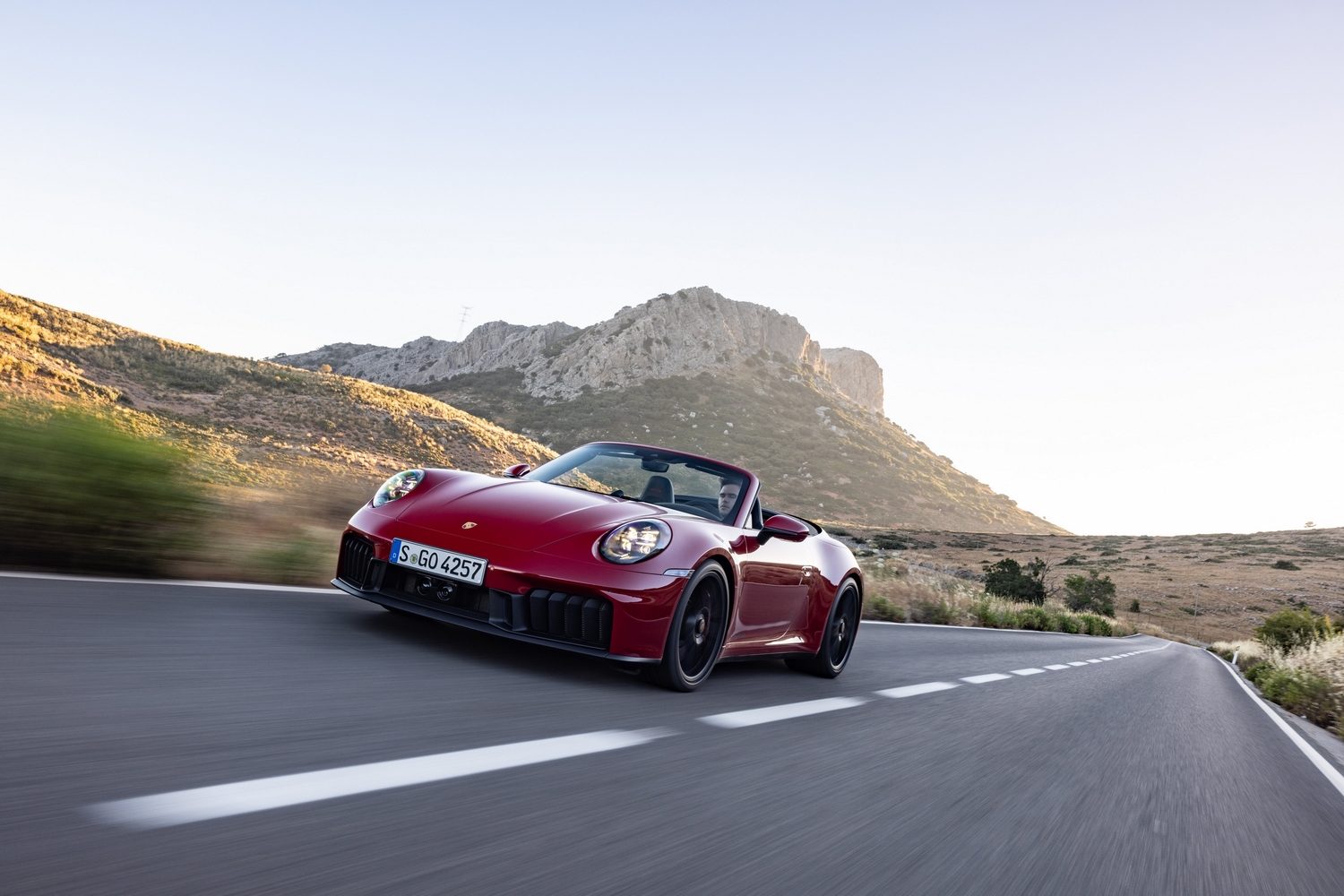
To do that, Porsche has paired the 3.6-litre flat-six petrol engine with a 1.9kWh battery and a 41kW electric motor, which lives inside the eight-speed automatic gearbox. Not only will the electrical system help to fill in when the petrol engine is at its least mighty, but there’s another motor that can spool up the turbocharger, helping the combustion engine get back on song more rapidly. Teamwork, as they say, makes for dream work.
And what a dream it is. You barely notice the hybrid system saving fuel - it just behaves like a very alert stop-start system, shutting down the engine before you come to a halt - but you will notice what it does to the acceleration. For starters, it works with the engine to produce a massive 541hp, which is then distributed between all four wheels. That means 0-62mph takes 3.1 seconds (the extra weight means it’s a tenth slower than the Coupe, but that difference is miniscule) and the top speed is well over 300km/h. It’s a fast, fast car, and it’s considerably faster than the old 911 GTS.
The electrification doesn’t just help with straight-line speed, either. It will also ensure the powertrain responds more rapidly to throttle inputs, which is good news when you want to overtake, and it fills in during gear changes to make the acceleration feel even more relentless. Not that the gear changes are lengthy in any way: the automatic transmission is brilliantly smooth in Normal mode and savagely rapid in the Sport Plus setting.
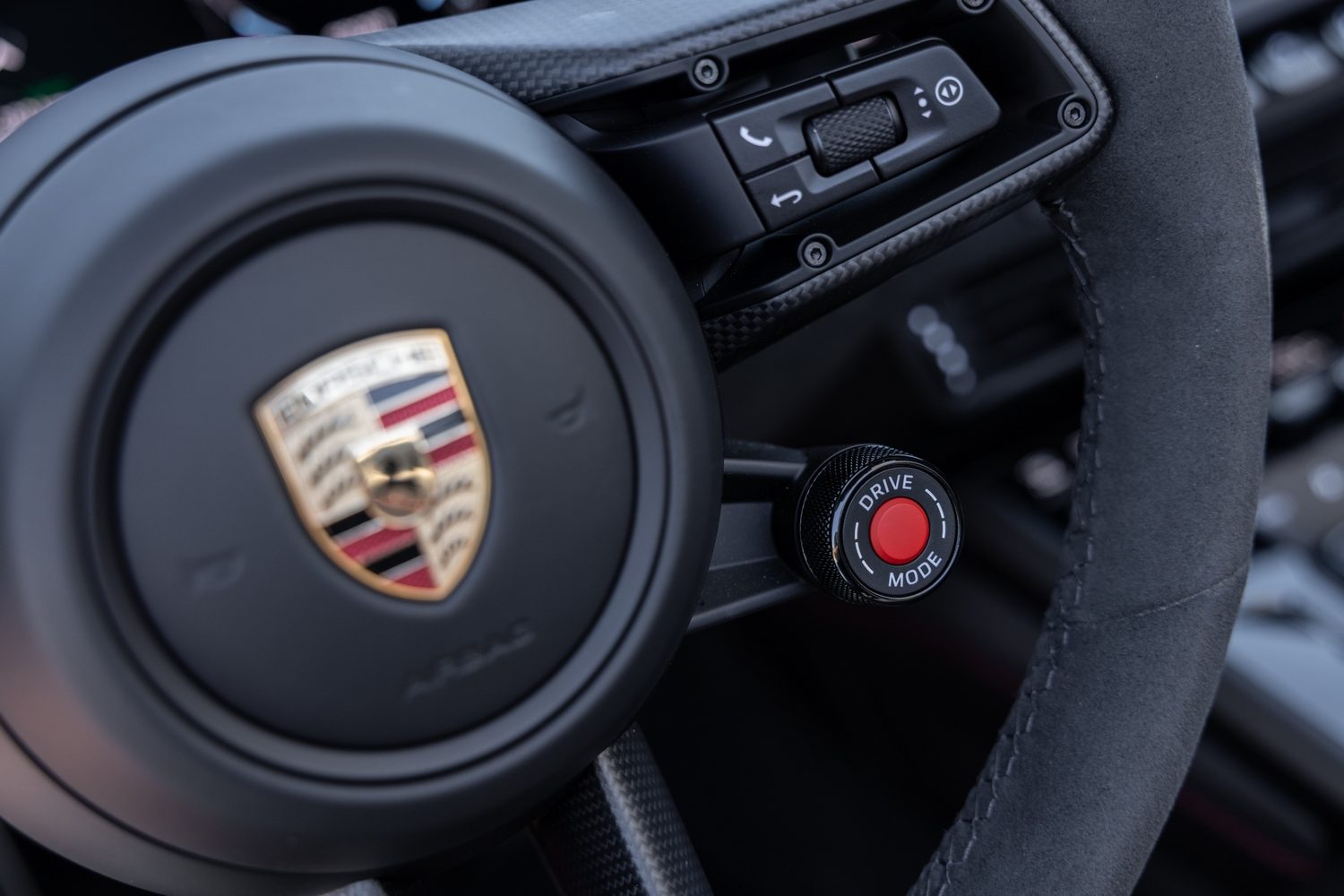
Yet despite its eagerness to help out, the hybrid system doesn’t get in the way of the petrol engine like an over-zealous butler stepping on his master’s toes. It still sounds like a beast that’s baying to tear you limb from limb, and removing the roof brings you closer to the roar from the sports tailpipes. If you want, you can alter the exhaust sound using a button on the dash, but it doesn’t make a massive difference: the exhaust note is always menacing, but that menace is amplified when the sport setting is active.
Driving the Porsche 911 Carrera 4 GTS Cabriolet
We always thought the previous-generation GTS models missed their brief slightly. This is supposed to be a halfway house between the entry-level Carrera models and the more powerful, track-orientated GT3 cars, but the old GTS had suspension that was slightly too firm for everyday road use and that spoiled it slightly.
Porsche claims little has changed with the new model in that department, but it doesn’t feel that way. The difference is small, it’s true, but the hybrid system is heavier, and the body is different, so of course the suspension tuning will have changed. And the GTS feels better for it in both Coupe and Cabriolet forms, with a little less of an edge to the low-speed ride and a slightly better flow at higher speeds. It’s a difference that’s particularly pronounced in the open-top GTS.
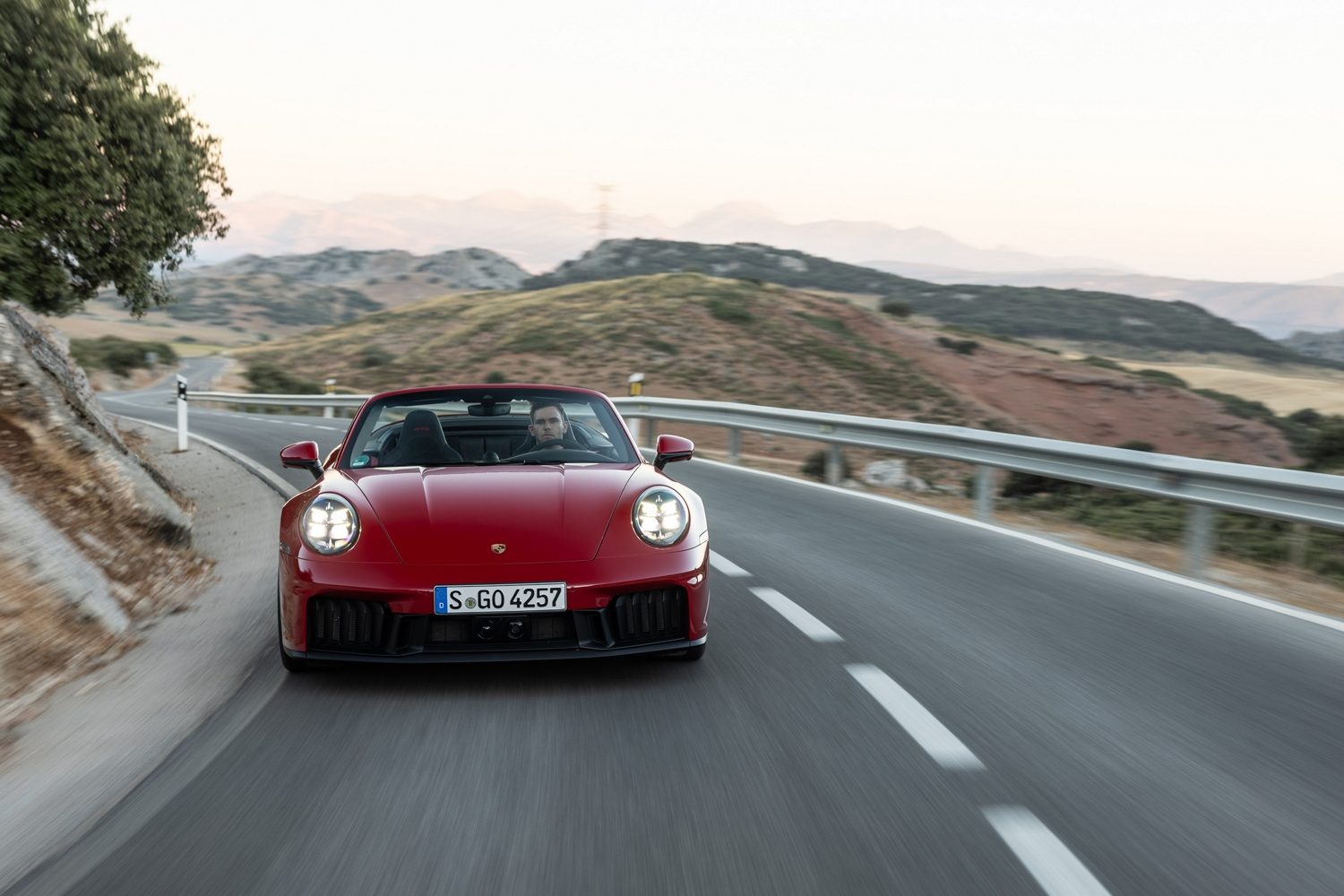
That’s unlikely to have much to do with the suspension. Unlike the Targa 4 GTS, the Carrera 4 GTS Cabriolet gets the same lowered suspension as the equivalent Coupe, allowing it to sit 10mm closer to the road than the Targa model. And it has the same suspension upgrades designed to make it corner more quickly. Instead, then, the comparative comfort is more likely to be a product of the extra flex in the body caused by the loss of the roof.
Whatever the reasons, the GTS Cabriolet is very fractionally more pliant than the Coupe, but it’s still a little on the firm side. Around town, very broken surfaces will be pretty unpleasant, sending minor jolts through the seat and cabin, while even minor imperfections will make their presence known. It’s not until the speed rises that you feel a bit more settled, with the suspension seemingly happier to even out cats’ eyes and potholes. It’s hardly comfortable - it’s certainly not as compliant as the Targa - but it’s better than the Coupe, and that puts it right on the borderline of being tolerable every day.
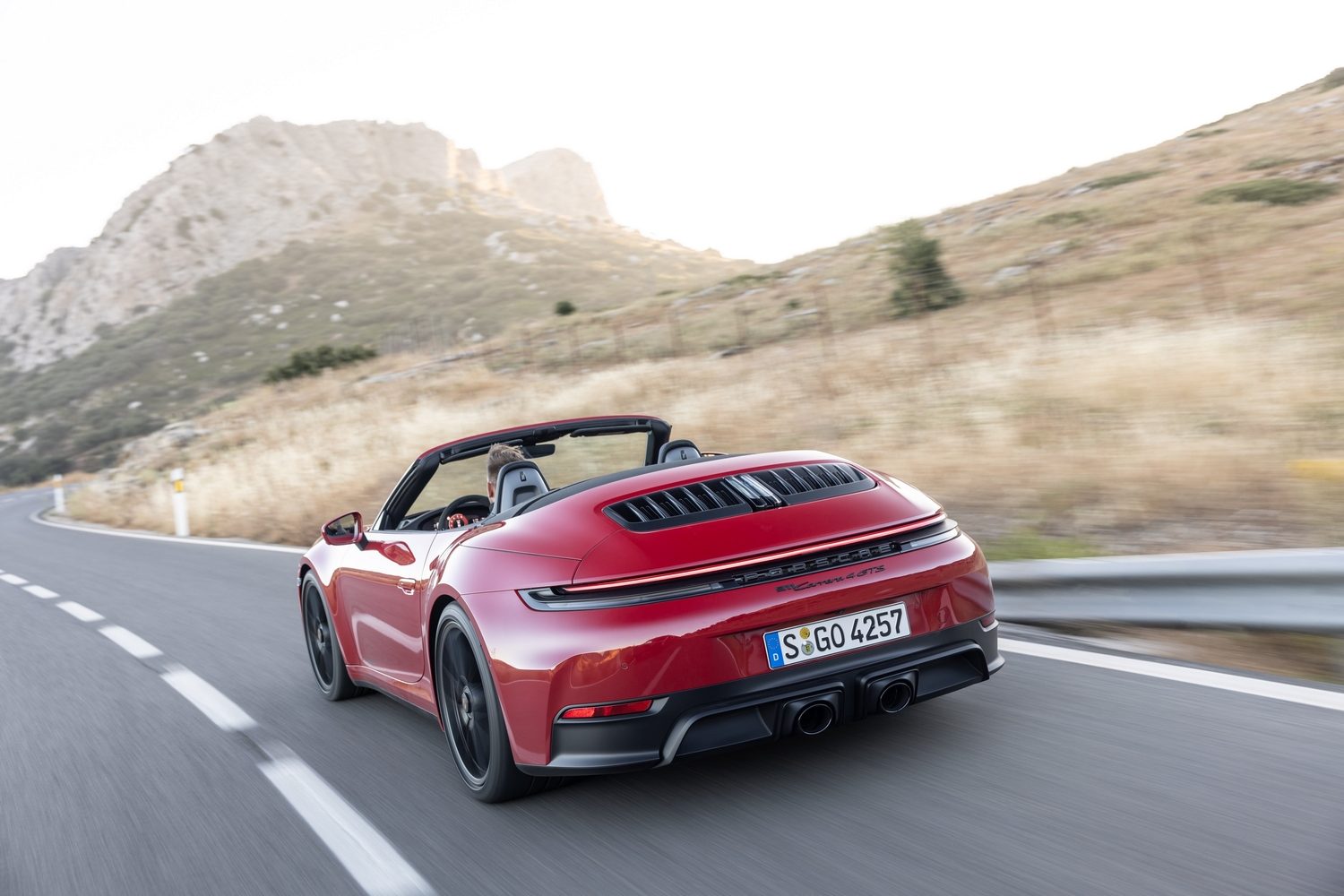
The other side of this is that the GTS Cabriolet is sensational in the bends. The steering is every bit as brilliant as it is in the Coupe, which means it’s incredible, despite having an all-wheel-steering system. That means the rear wheels turn in the opposite direction to the front wheels to steer the car at low speeds, reducing the turning circle, while they also turn in the same direction as the front wheels at higher speeds, improving stability. You can sense the impact of the system in tight bends, but you never feel it interfere with the steering wheel. Instead, you get this lovely sense of purity as the nose jags towards the apex of a corner, aided by the huge amount of grip produced by the GTS’s fat tyres. Admittedly, it doesn’t feel quite as snappy as the Coupe, but you’ll have to really concentrate hard to tell the difference.
As you exit the corner, the all-wheel-drive system comes into its own, particularly in damp or slippery conditions. Where the rear-wheel-drive car requires quite gentle treatment in such circumstances, the all-wheel-drive version is much more stable and much less sensitive. It will still slide if you mistreat it, but it takes a lot more provocation to do so. And that security doesn’t just help in the corners, either. It’s also really useful for overtaking on country roads.
For those who still want to use the car when it’s wet and miserable, then, the all-wheel-drive system makes an awful lot of sense. But we wouldn’t bother with the ceramic brake option. That’s not because there’s anything wrong with it - we were actually quite impressed - but the steel brakes are more than effective and communicative enough, and the ceramic brakes are an expensive option.
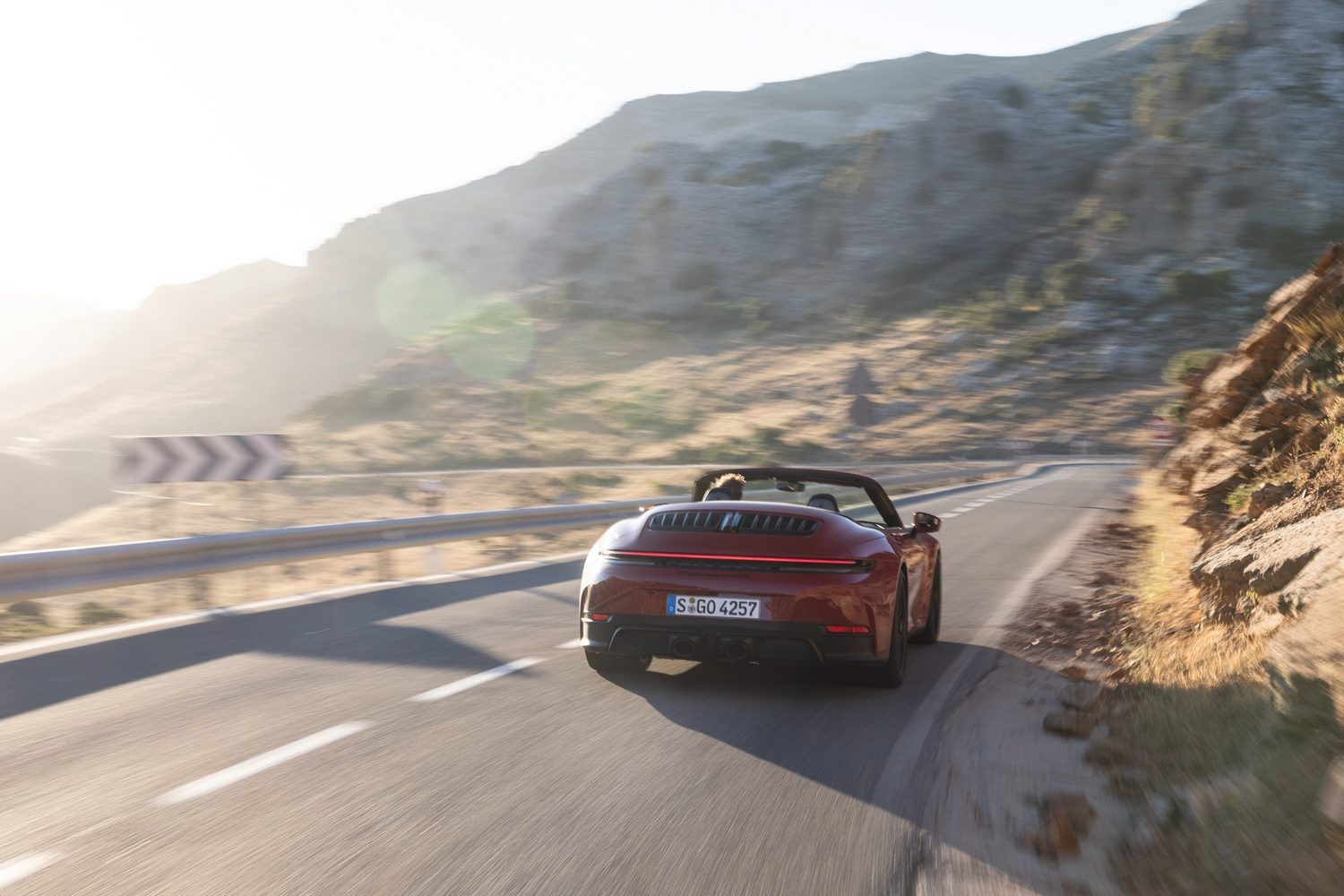
A look inside the Porsche 911 Carrera 4 GTS Cabriolet
Like every other 992.2-generation 911 we’ve driven, the Carrera 4 GTS Cabriolet has had a minor update inside. Primarily, the changes are restricted to the software, so there’s a new digital instrument display and minor updates to the central touchscreen, but physical changes are small and tricky to spot.
As before, you get the same classically styled dashboard with its strong lines and sharp touchscreen, while the centre console continues to feature the toggle-style gear selector and a host of buttons for climate control. So far, so good. We aren’t that sold on the gear lever, but it’s fine, and the retention of physical buttons is always a positive in our book.
However, Porsche has added a push-button ignition switch, in place of the key-like twist switch that was there before, and that seems to have taken something away from the experience of starting the flat-six engine. And the company has changed the drive mode selector on the steering wheel, giving it a smoother action and more upmarket materials, although the decision to make the sport response button in the middle bright red has cheapened the look slightly.
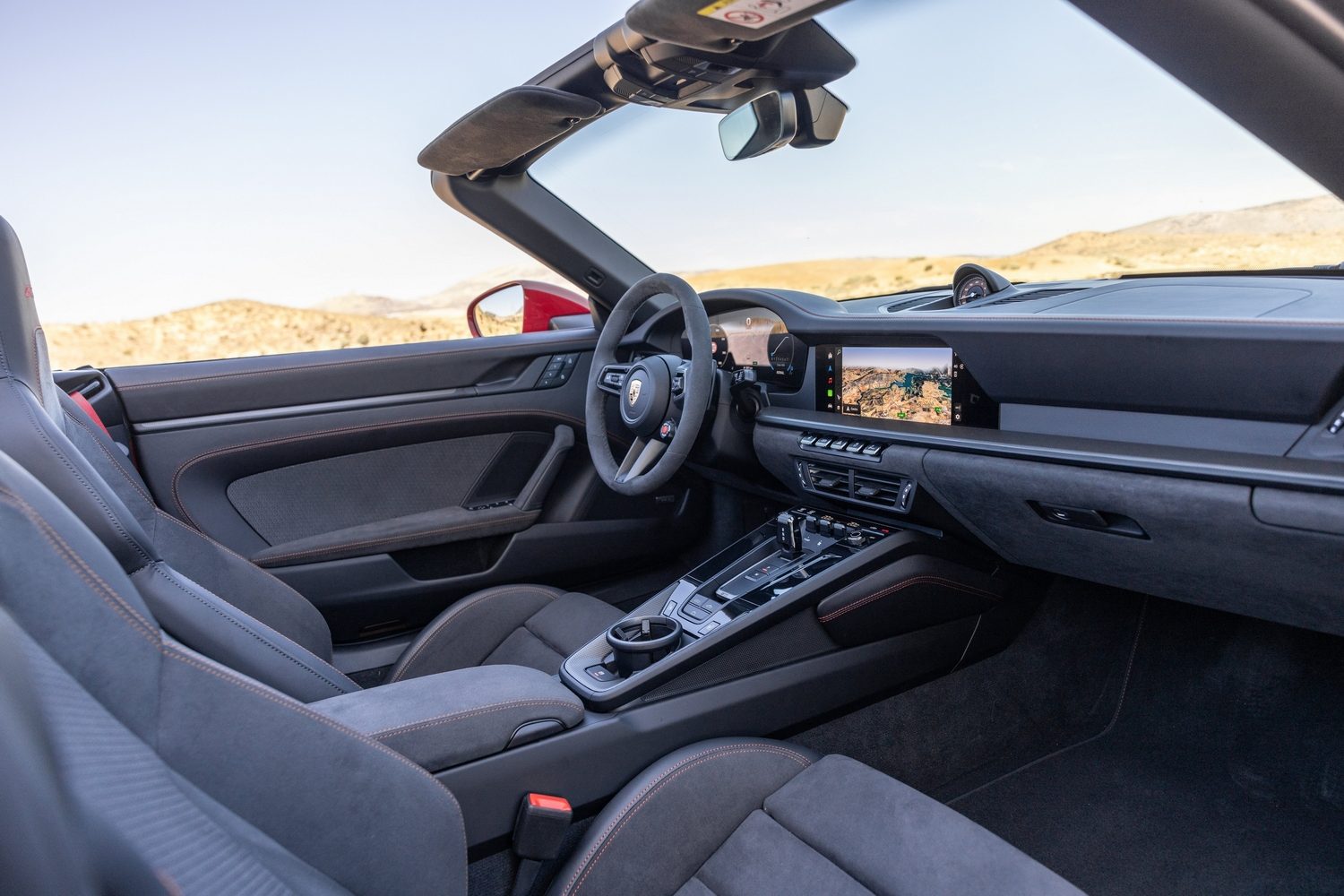
Nevertheless, quality in the GTS’s cabin remains impeccable, and the materials are lovely. We quite like the prevalence of Porsche’s Race-Tex microfibre upholstery in there, and you can add some smart red stitching as an option if you want to big up the racing style. Dark interior trim is also a feature of the GTS, but you can liven things up with a carbon-style dashboard accent if you so wish.
Space, on the other hand, has not improved with the update. But then it hasn’t become any more cramped, either, so it isn’t the end of the world. The back seats are included as standard, unlike those in the Coupe, but they still aren’t really fit for any adult blessed with legs, and kids will find them pretty uncomfortable, too. It’s better, then, to raise the wind deflector (which is quite effective and keeps the cabin remarkably refined) and use the seats as a kind of parcel shelf, adding to the 135-litre storage tub under the bonnet. It may not be big - you’ll get more space in the back of most city cars - but it’ll take a couple of soft bags, and that’s useful for the odd night or weekend away.
The Porsche 911 Carrera 4 GTS Cabriolet’s on-board technology
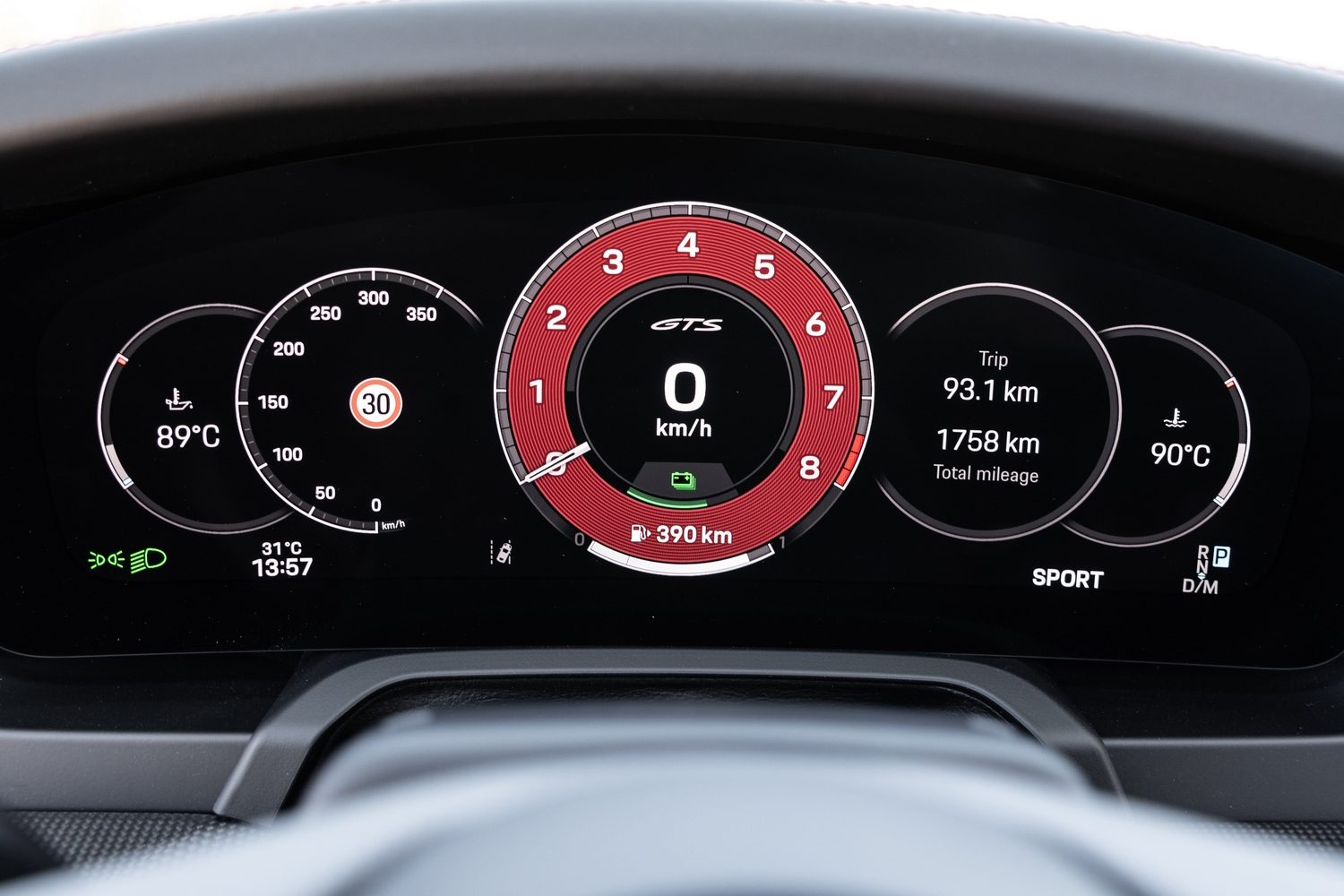
Because the 911’s dashboard is so similar to what went before, the focus really switches to the on-board technology, which has had a more significant upgrade. Most obvious is the arrival of a new digital instrument cluster, which differs from the old cluster primarily because you can see it properly from the driving seat. We can’t lie; we’re a bit sad to see the glorious old analogue rev counter go, but the configurable screen is an improvement in lots of ways that really matter, so we can’t criticise too much.
Nor can we criticise the touchscreen, which uses Porsche’s latest software and is fully integrated with the instruments, giving you a great driver interface and easy access to lots of functions. As you’d expect, Apple CarPlay and Android Auto are included, along with a reversing camera.
But while that’s the most obvious technology in the new 911, the car hides some other goodies under the bonnet, especially in GTS form. Not only is there the new T-Hybrid powertrain, but Porsche has also given it a clever on-board computer that controls the slats in the front bumper, allowing cooling air in when necessary and closing to improve aerodynamics the rest of the time. The system is so sophisticated it will even blank off the rearmost fins when the car is in Wet mode, thereby reducing the amount of spray that hits the brake discs. Clever stuff.
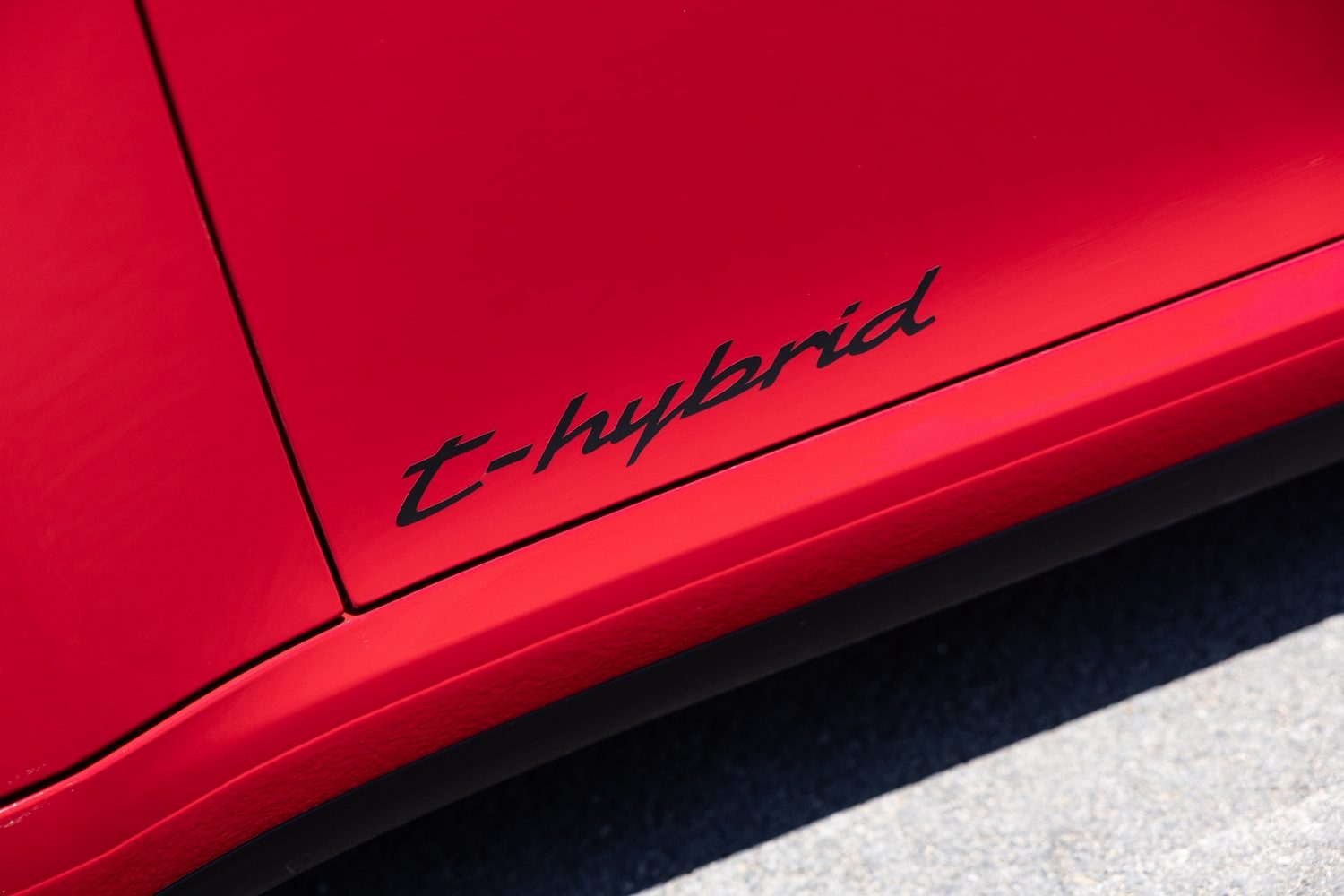
How much will the Porsche 911 Carrera 4 GTS Cabriolet cost in Ireland?
The Carrera GTS Cabriolet starts at €279,729, but the all-wheel-drive Carrera 4 GTS Cabriolet comes in at a whopping €293,099. You might think spending more than €13,000 on an all-wheel-drive system is a bit steep, and you’d have a point, but when you’ll be spending €300,000 to get the car you want anyway, who really cares?
And make no mistake, you will be spending €300,000. Even if you choose a rear-drive GTS Cabriolet, €20,000 will quickly be swallowed with paint and wheel and interior options. It’s not that the GTS is badly equipped - all the visual stuff is standard, as are most of the performance-related upgrades, along with heated seats, a reversing camera and two-zone climate control - but you’re going to want to personalise a car like this a bit, and Porsche options don’t come cheap. The Carmine Red you see here costs almost €3,000, while upgrading to the GTS interior package with black leather and red stitching will set you back the best part of €6,000.
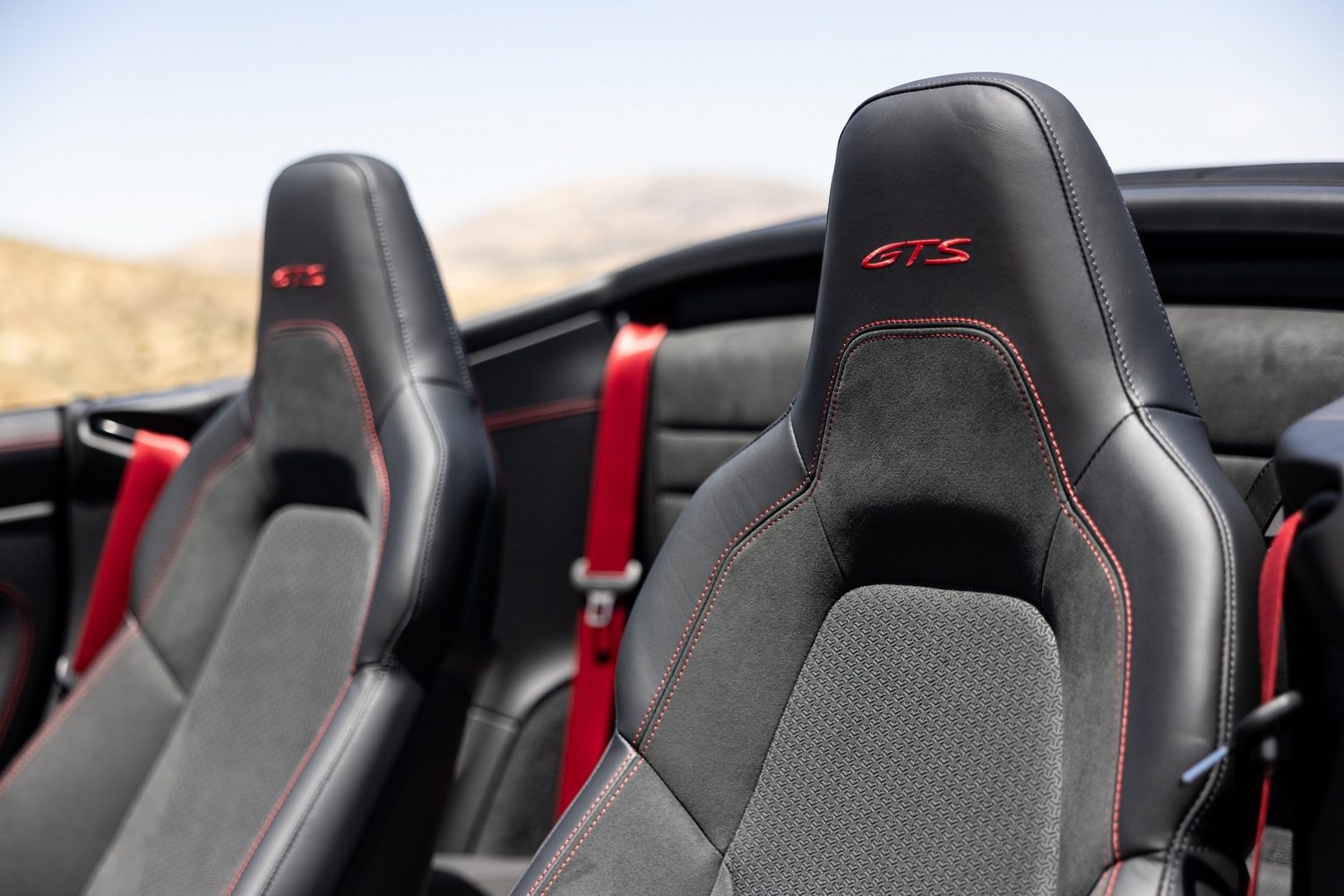
Value, then, is not really part of the equation.
The reasons you’d buy a Porsche 911 Carrera 4 GTS Cabriolet
Peeling the roof off the GTS has done little to damage the car’s undeniable brilliance, yet it adds another dimension to the car’s capabilities. And though the Cabriolet is a gawky-looking compromise between the more comfortable Targa and the more focused Coupe, it manages to strike a lovely balance between the two. And while you might be tempted by a purer, lighter rear-drive variant, the Carrera 4’s combination of surefootedness, power, handling and drama is a pretty compelling one, particularly if the GTS is going to be your only car.
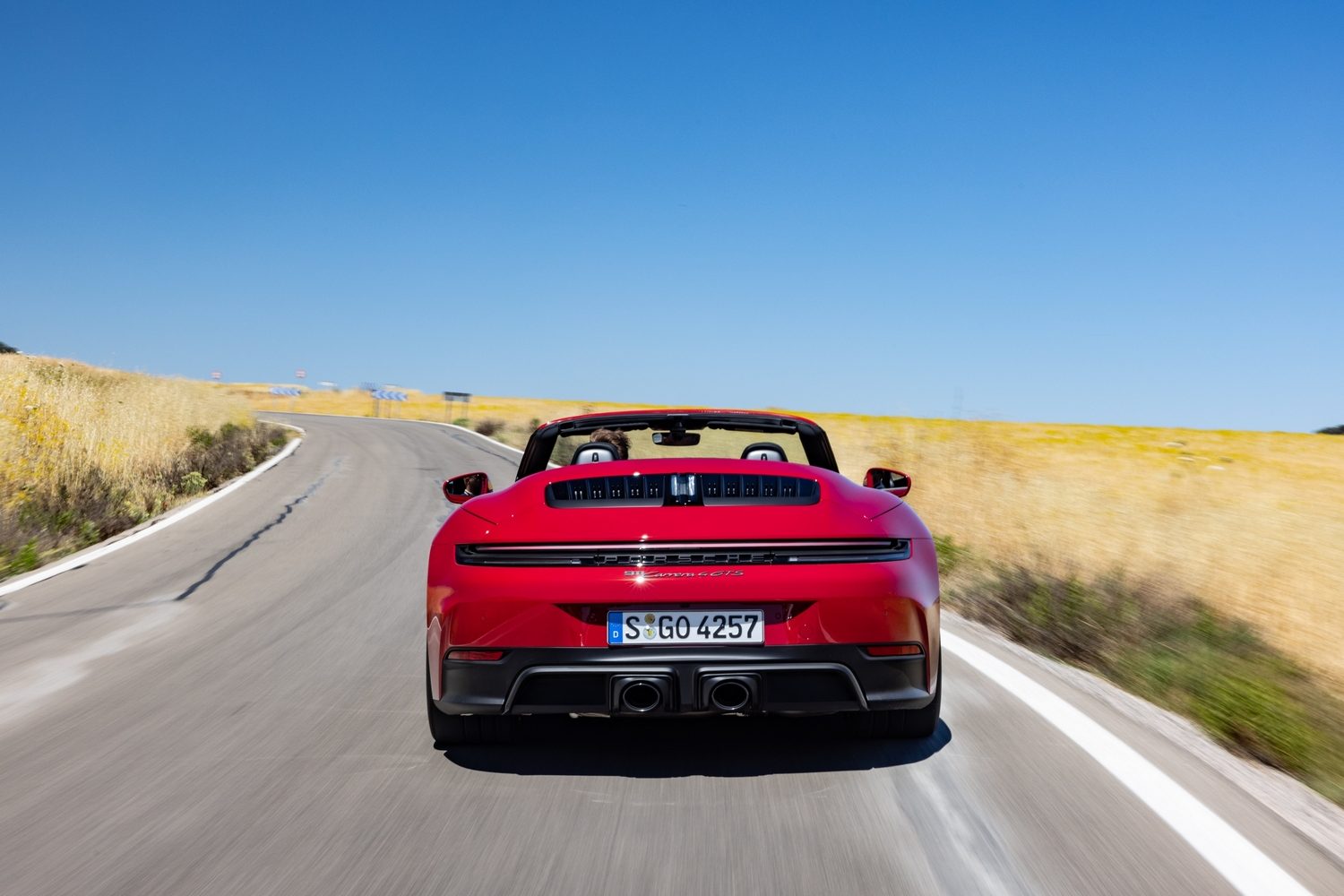
Ask us anything about the Porsche 911 Carrera 4 GTS Cabriolet
If you want to know more about the Carrera 4 GTS Cabriolet, or any other car on sale in Ireland right now, why not head on over to our Ask Us Anything page? There, you can ask CompleteCar.ie’s team of experts anything you want to know and put your feet up while they find you the answer. Best of all, it’s completely free of charge.

